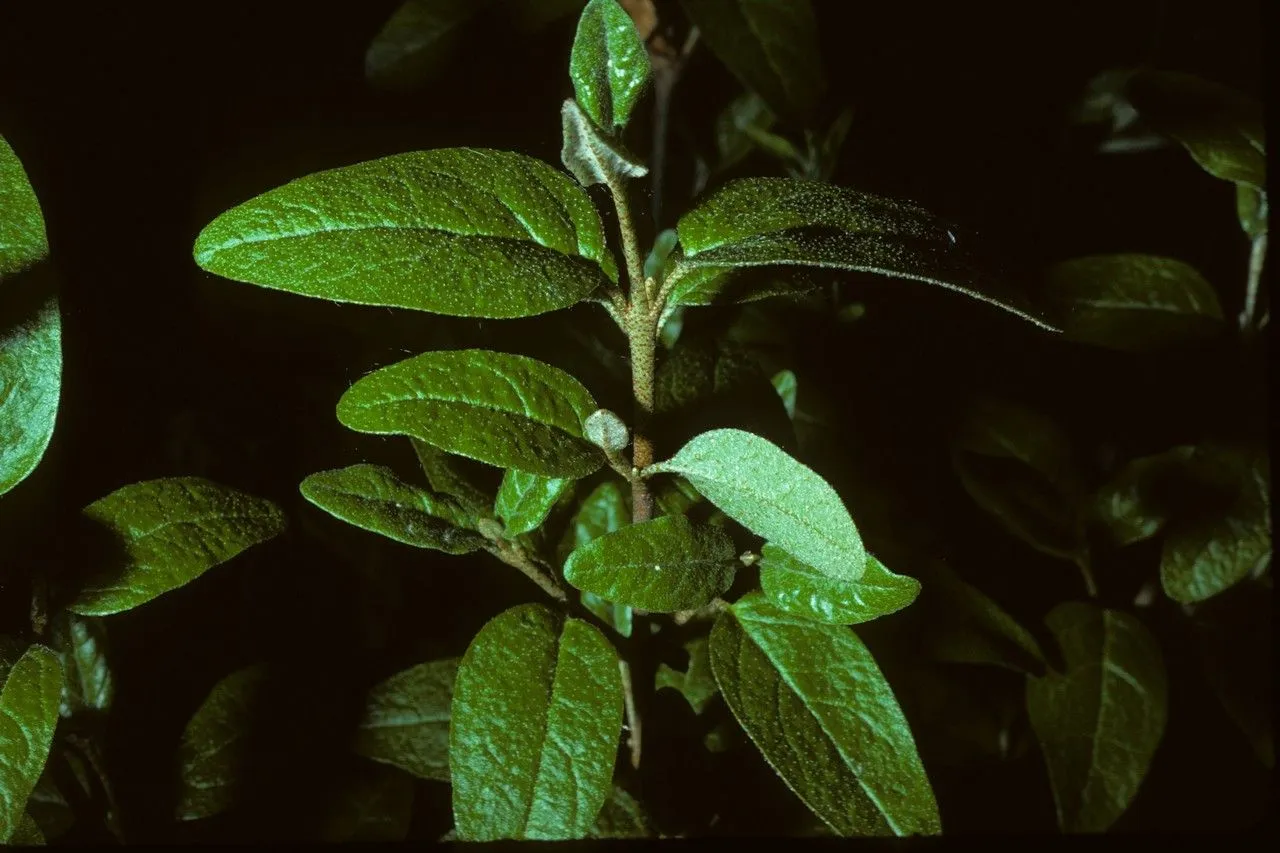
Author: (L.) Nutt.
Bibliography: Gen. N. Amer. Pl. 2: 241 (1818)
Year: 1818
Status: accepted
Rank: species
Genus: Shepherdia
Vegetable: False
Observations: Subarctic America to W., C. & N. U.S.A.
The Canadian buffalo-berry, scientifically known as Shepherdia canadensis, is a noteworthy shrub belonging to the Elaeagnaceae family. First described in the bibliography Gen. N. Amer. Pl. 2: 241 in 1818 by the botanist (L.) Nutt., this plant is native to a wide geographical range spanning Subarctic America to the western, central, and northern regions of the United States of America.
Canadian buffalo-berry is widely recognized for its hardiness and adaptability to various climates within its native range. It typically thrives in diverse habitats, including riverbanks, rocky slopes, and forest edges, where it often forms dense thickets. This deciduous shrub can grow up to 6 feet tall, bearing slender branches adorned with silvery scales that glimmer in the sunlight, a trait characteristic of many members in the Elaeagnaceae family.
The leaves of the Canadian buffalo-berry are opposite, oval to lance-shaped, and coated with distinctive silvery-white scales on their undersides, which help reduce water loss and reflect sunlight. In the spring, the shrub produces small, inconspicuous yellow flowers. These flowers, while individually small, cluster together to create an understated yet significant display of early-season color.
Come late summer, the flowers give way to the plant’s iconic bright red berries. These berries are not only visually striking but also highly nutritious, rich in vitamins and antioxidants. Historically, they have been utilized by Native American tribes for both culinary and medicinal purposes. Despite their bitter taste, the berries can be consumed raw or cooked, often incorporated into jellies, sauces, and even pemmican, a traditional Native American food.
Ecologically, Shepherdia canadensis plays a crucial role in its environment. The berries are a vital food source for various bird species and other wildlife, particularly during the scarce winter months. Moreover, the plant enriches the soil through its nitrogen-fixing abilities, thanks to the symbiotic relationship with nitrogen-fixing bacteria on its roots. This ability improves soil fertility, making the Canadian buffalo-berry an excellent plant for restoration ecology and soil reclamation projects.
In summary, the Canadian buffalo-berry is a resilient and ecologically significant shrub that offers numerous benefits to its native ecosystems and has a rich historical significance among Native American communities. Its striking appearance, coupled with its adaptability and nutritional value, ensures that it continues to be a valued component of the North American flora.
Eng: canadian buffalo-berry, rabbitberry, russet buffalo-berry, russet buffaloberry, soapberry, bitterberry, canada buffaloberry, low buffaloberry, soopolallie
Swe: kanadensisk bisonbuske
Fra: shépherdie du canada, shéferdie du canada
En: Canadian buffalo-berry, Soapberry, Rabbitberry, Russet buffaloberry, Russet buffalo-berry, Canada buffaloberry, Bitterberry, Low buffaloberry, Soopolallie
Fr: Shépherdie du Canada, Shéferdie du Canada
Sv: Kanadensisk bisonbuske
Taken Sep 13, 2022 by Jeanne Dion-D (cc-by-sa)
Taken Jul 28, 2021 by jimmysong (cc-by-sa)
Taken Sep 5, 2021 by Eric Larsen (cc-by-sa)
Taken Sep 13, 2022 by Jeanne Dion-D (cc-by-sa)
Taken Jul 28, 2021 by Nicole Smart (cc-by-sa)
Taken Feb 26, 2011 by EOL − Ryan Batten (cc-by-nc-sa)
Taken Jan 1, 1900 by EOL − Howard, R.A. (cc-by-nc-sa)
Taken Apr 20, 2021 by Radha-Krishna Devi Dasi (cc-by-sa)
Taken Aug 1, 2022 by Nicole Poole (cc-by-sa)
Taken Jun 26, 2021 by megan wolf (cc-by-sa)
Taken Jul 13, 2020 by Valerie Mason (cc-by-sa)
Taken Aug 5, 2022 by Jacob van Winkle (cc-by-sa)
Taken Jul 13, 2020 by Valerie Mason (cc-by-sa)
Taken Jan 1, 1900 by EOL − Niehaus, T.F. (cc-by-nc-sa)
Taken May 9, 2015 by EOL − bendingtree (cc-by-nc)
Taken Jun 28, 2015 by EOL − botany08 (cc-by)
Taken Jun 28, 2015 by EOL − botany08 (cc-by)
Taken Jun 28, 2015 by EOL − botany08 (cc-by)
Taken Apr 19, 2022 by Stephanie M (cc-by-sa)
Taken Apr 23, 2021 by gypsy.hiker (cc-by-sa)
Taken Aug 1, 2020 by justin klamut (cc-by-sa)
Taken Aug 11, 2014 by EOL − Steve Matson (cc-by-nc)
Taken Nov 16, 2013 by EOL − Daniel Carter (cc-by-nc)
Taken Aug 1, 2020 by justin klamut (cc-by-sa)
Growth form: Multiple Stem
Growth habit: Shrub
Growth rate: Rapid
Ph maximum: 8.0
Ph minimum: 5.3
Family: Myrtaceae Author: (F.Muell.) K.D.Hill & L.A.S.Johnson Bibliography: Telopea 6: 402 (1995) Year: 1995 Status:…
Family: Rubiaceae Author: Pierre ex A.Froehner Bibliography: Notizbl. Bot. Gart. Berlin-Dahlem 1: 237 (1897) Year:…
Family: Sapindaceae Author: Koidz. Bibliography: J. Coll. Sci. Imp. Univ. Tokyo 32(1): 38 (1911) Year:…
Family: Asteraceae Author: A.Gray Bibliography: Pacif. Railr. Rep.: 107 (1857) Year: 1857 Status: accepted Rank:…
Family: Fabaceae Author: Medik. Bibliography: Vorles. Churpfälz. Phys.-Ökon. Ges. 2: 398 (1787) Year: 1787 Status:…
Family: Aspleniaceae Author: (Cav.) Alston Bibliography: Bull. Misc. Inform. Kew 1932: 309 (1932) Year: 1932…